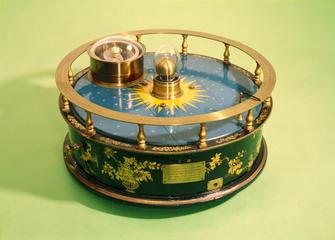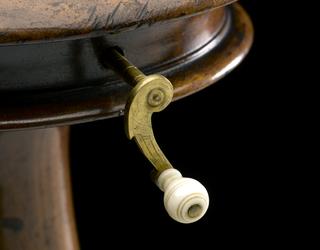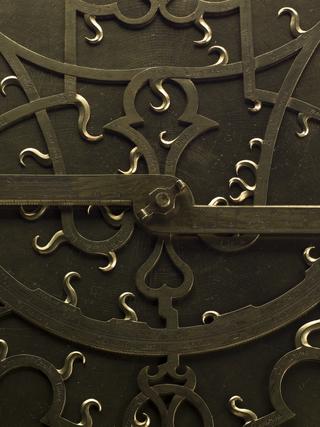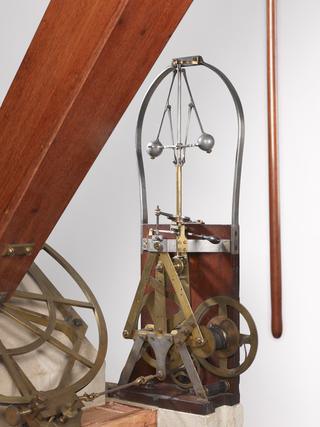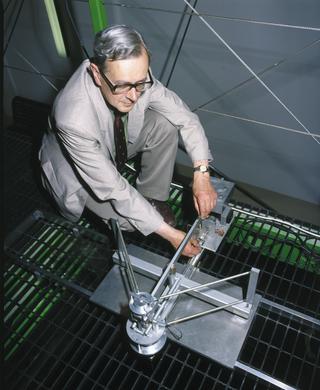
Planispheric astrolabe by Gualterus (Walter) Arsenius
- maker:
- Gualterus Arsenius
Planispheric astrolabe by Gualterus (Walter) Arsenius, Louvain, c. 1570 in brass gilt with four plates for the latitudes of 25 with 28, 31 with 34, 37 with 38, and 39 with 40 degrees, IC 228 [International Checklist]. The reverse side is supplied with a Gemma Frisius universal projection scale and a compass square in the base of the womb.
Dated to around 1570, this gilded brass astrolabe was made by Gualterus Arsenius an instrument maker from Louvain, Belgium. This front view shows the moveable fretwork plate called the rete that denotes star positions by short curved pointers. The astrolabe is in essence a model of the universe that an astronomer could hold in their hands. Popular in Medieval and Renaissance Europe, its many uses included timekeeping, astrology and surveying. The two-dimensional depiction of the heavens used on this instrument is achieved using universal projection rather than the stereographic technique more usually found on astrolabes. From its origins in the Ancient World, Islamic astronomers developed the astrolabe from where it spread to Europe.
Details
- Category:
- Astronomy
- Object Number:
- 1880-27
- Materials:
- brass and incomplete
- Measurements:
-
overall: 215 x 30 x 145 mm
- type:
- astrolabe
- credit:
- Fulgence, Mons. (Paris)
